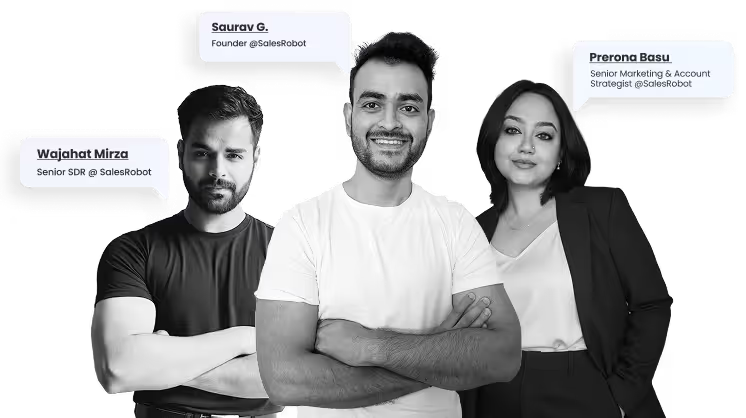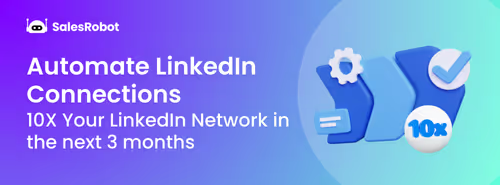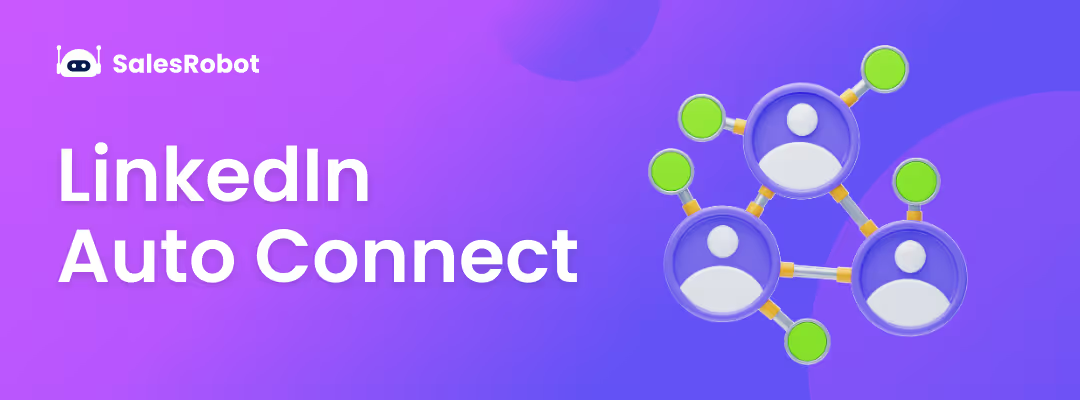Read this article if…
✔️You've been crushing it on LinkedIn,
✔️Connecting with people who do wonders for your network,
✔️Doing everything right according to LinkedIn’s rulebook,
But lately, you keep hitting a snag and wondering, 'Why can't I connect with someone on LinkedIn?’
OR
“Why is my network page not working?”
OR
Maybe one of your clients is facing the same issue, and if you don’t resolve it soon, you might lose a paying client.�

And guess what?
I’ve been there too, and I know how frustrating it is.
I’ve spent over 8 years building a six-figure business using LinkedIn and I’m all too familiar with its many ups and downs.
But no sweat.
We’ve got this.
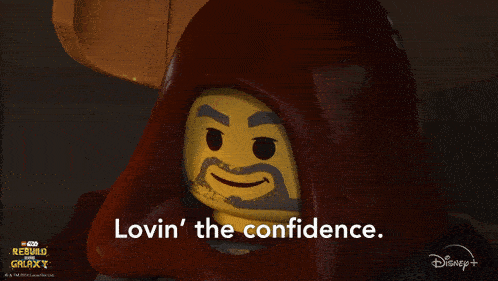
In this blog, I talk about 9 reasons you’re unable to connect and 13 actionable fixes to get you going in less than 3 min.
So, sit back and let's help you connect your LinkedIn account.
9 Reasons why you can’t connect with someone on LinkedIn
Reason #1 - Their LinkedIn profile is private
The “Unable to connect on LinkedIn” error can happen when someone's private LinkedIn profile prevents you from peeking inside or sending them a connection request.
But why do people do it?
The reason is privacy.
Some folks like to keep their LinkedIn profile private, you know?
They don't want everyone snooping around and checking out their stuff.
If you're serious about connecting, though, don't give up!
Try sending them a connection request with a friendly message first.
If they accept your request and reply, maybe they are open to connecting too.
And then you can explain why you want to connect and be respectful.
Reason #2 - You've hit the weekly connection limit.
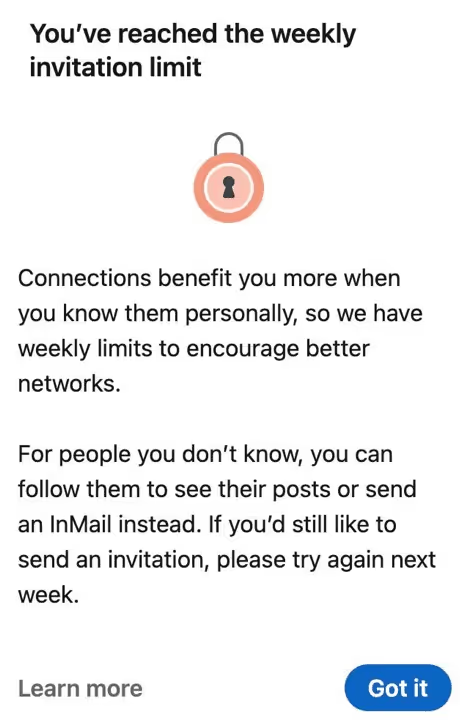
5 years ago, you could send 50 connection requests a day on LinkedIn.
And LinkedIn took note of this and set a cap on how many connection requests you can send per week.
Now it’s 100 connection requests per week.
Once you hit that limit, you can't send more.
You might wonder, "Why is my linkedin connection request not working, why the limit?"
Well, LinkedIn does this to reduce spam connection requests.
It wants you to connect with people you know or have worked with.
But there’s a way to bypass this connection limit; we talk about it below.
Reason #3 - Your connection request is pending
There’s a high chance that most of your connection requests are pending and that can be the reason why you’re unable to connect on LinkedIn.
If you see the pending button instead of the usual Connect button, this means you’ve already sent a connection request to this person.
So, what's the solution?
Well, be patient and wait.
Give them a bit of time to notice your request. Most likely, they'll accept it when they do.
But even if they don't, no worries!
There are plenty of other cool people to connect with on LinkedIn. Your pending request will find its place in time.
Reason #4 - The person you’re connecting with blocked you
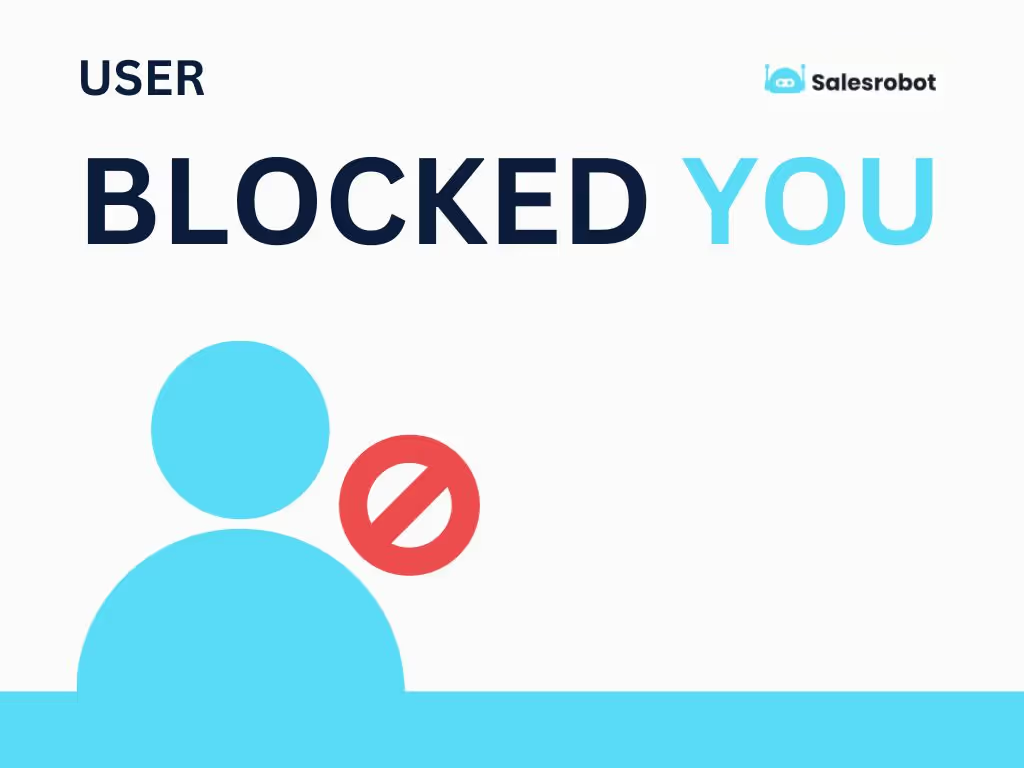
Another reason you might be unable to connect on LinkedIn is getting blocked by the person you’re trying to connect with.
You might wonder, "Why on earth would someone block me on LinkedIn?"
Well, it’s quite rare for someone to block you on LinkedIn.
But even if they did, it can happen for various reasons.
Maybe your previous messages weren't appreciated, or your connection request was too random. Or you might have come across as spammy or too aggressive.
It's crucial to send personalized connection requests and engage in conversations that add value.
SalesRobot understands your product/service and generates industry-specific, high-converting messages tailored to your target market by using automated tags making the message more relevant and effective.
SalesRobot ensures your connections won't be annoyed by irrelevant, robotic follow-ups once they've replied. It automatically pauses when it receives a response, allowing you to take over keeping it natural.
In a nutshell, when you approach others on LinkedIn, be polite and professional.
Respect their space, and you're on the right track to avoid being blocked.
How to know if someone blocked you on LinkedIn?
Here are 4 signs to watch for:
1. You get disconnected: When someone blocks you, your connection with them is severed. You won't see their posts or any updates on their profile.
2. Their endorsements disappear: Any endorsements they've given you for your skills will vanish from your profile. It's like they never endorsed you.
3. You’ve lost their recommendations: If you had received recommendations from this person, those will also disappear from your LinkedIn profile.
4. No communication: You won't be able to send them messages, and they won't see your messages or requests.
Reason #5 - You’ve sent an inappropriate connection request message:
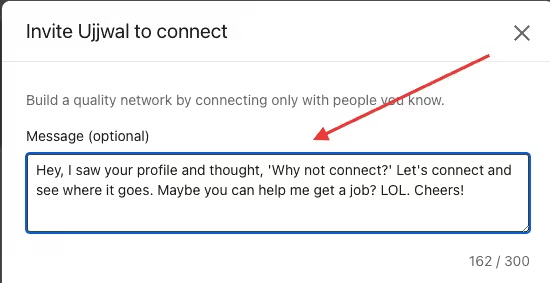
This is a big no-no!
You will be unable to connect on LinkedIn if you send inappropriate messages like this.
On the other hand, when people try to connect without a personal message, it feels cold and impersonal.
When I get one of those, I hesitate because I like to connect with people who share a common interest or vision.
Your connection message is like the first impression you give at a party.
Keep it polite, and explain why you want to connect.
Start with a simple greeting, tell them your reason for sending a connection request, and end with a warm closing.
Remember, a little courtesy goes a long way. Make your connection request message-friendly, and you'll see more connections.
Reason #6 - You’re connecting like crazy.

for which LinkedIn might say to you “oops - we were unable to complete your request. please try again later. Linkedin” is due to sending too many connection requests too quickly.
Think of it like this: LinkedIn wants us to build genuine connections, not just click buttons randomly.
When you try to connect in quick succession, it raises a red flag. It's like saying "Hi" to 100 people in one second – it's spammy.
To prevent this error, slow down your connection requests.
Take your time to personalize your invitations and build meaningful connections. Remember, quality over quantity.
But as I mentioned earlier, there are ways to surpass the LinkedIn weekly connection limit.
Reason #7 - You’re facing technical glitches

Technical glitches are like little bugs in the system.
They mess up the experience of making new connections.
Sometimes, the slow internet or an outdated app can cause these glitches.
But don't worry, it's not your fault! It happens to the best of us.
The good news is that there are easy fixes. Try refreshing your page, updating your app, or checking your Wi-Fi.
So, the next time you encounter the "unable to connect try again later" error, remember it's not personal; it might just be a tech hiccup.
Stay patient, and you'll be able to connect in no time.
Reason #8 - Is the connect button missing?

Sometimes, LinkedIn users can turn on LinkedIn creator mode which makes the "Follow" button the default option, and the "Connect" button is not visible.
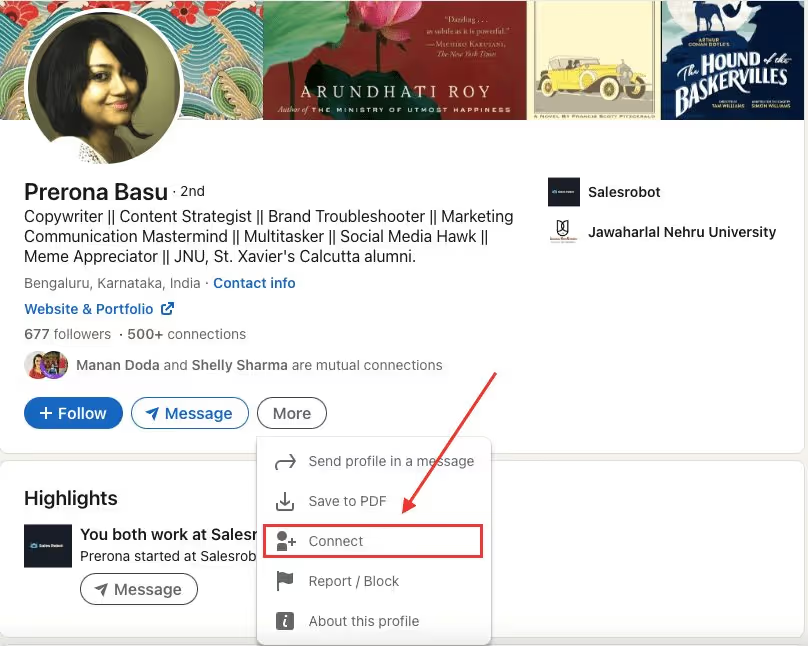
It’s quite a common practice on LinkedIn. It might seem a bit tricky, but there is a quick solution.
All you need to do is click on the "More" button. And you’ll find an option to connect.
Reason #9 - The person is out of your network
There’s a rule on LinkedIn that you can only connect with people in your network.
So, if you're attempting to connect with someone not in your network, you'll encounter this error message.
Well, that’s the end of all the reasons why you might be facing the “Unable to connect” issue.
But relax, these issues are fixable.
You don’t need an expert to help you; you can troubleshoot on your own.
13 Fixes for "unable to connect try again later" LinkedIn Issue
Fix #1 - Verify your primary email
This fix is applicable for reason #1 - Their LinkedIn profile is Private.
The first fix is a simple one – verifying your primary email.
This might sound like a no-brainer, but it can make a difference.
So, here's how you can verify it:
1. Login: Log into your LinkedIn account like you normally would.
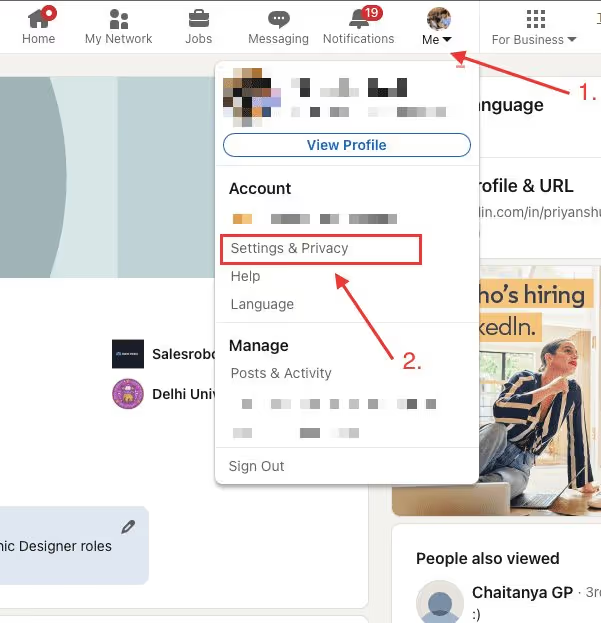
2. Profile Photo: Click on your photo in the top right corner. It's like your LinkedIn home button.
3. Settings & Privacy: Select "Settings & Privacy from the dropdown menu."
4. Account Preferences: Now, click on "Sign in & security"
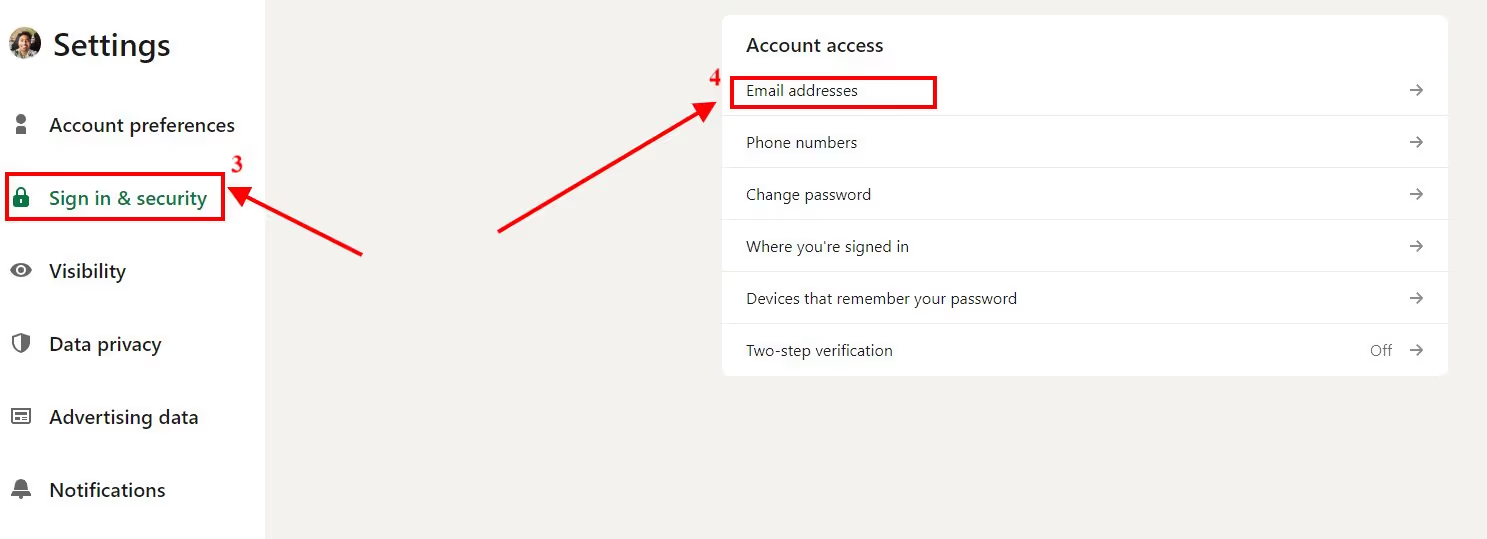
5. Email Addresses: Find the section that says "Email addresses." Your primary email should be listed there.
6. Verify It: To verify it, simply click on “Account preferences” and then "Verify your email address" and follow the instructions.

7. Confirmation: After verification, you'll receive a confirmation email. Click the link in it to seal the deal.
Fix #2 - Fix your profile's Privacy Settings
LinkedIn has privacy settings that control who can view your profile. Sometimes, these settings can block others from connecting with you or vice-versa. Let's fix that!
1. Click "Me": Go to your profile and click on the "Me" icon.

2. Settings & Privacy: Scroll down and find "Settings & Privacy."

3. Who Can See Your Connections: Click "Who can see your connections." Ensure it's set to "Everyone" or "Your connections."
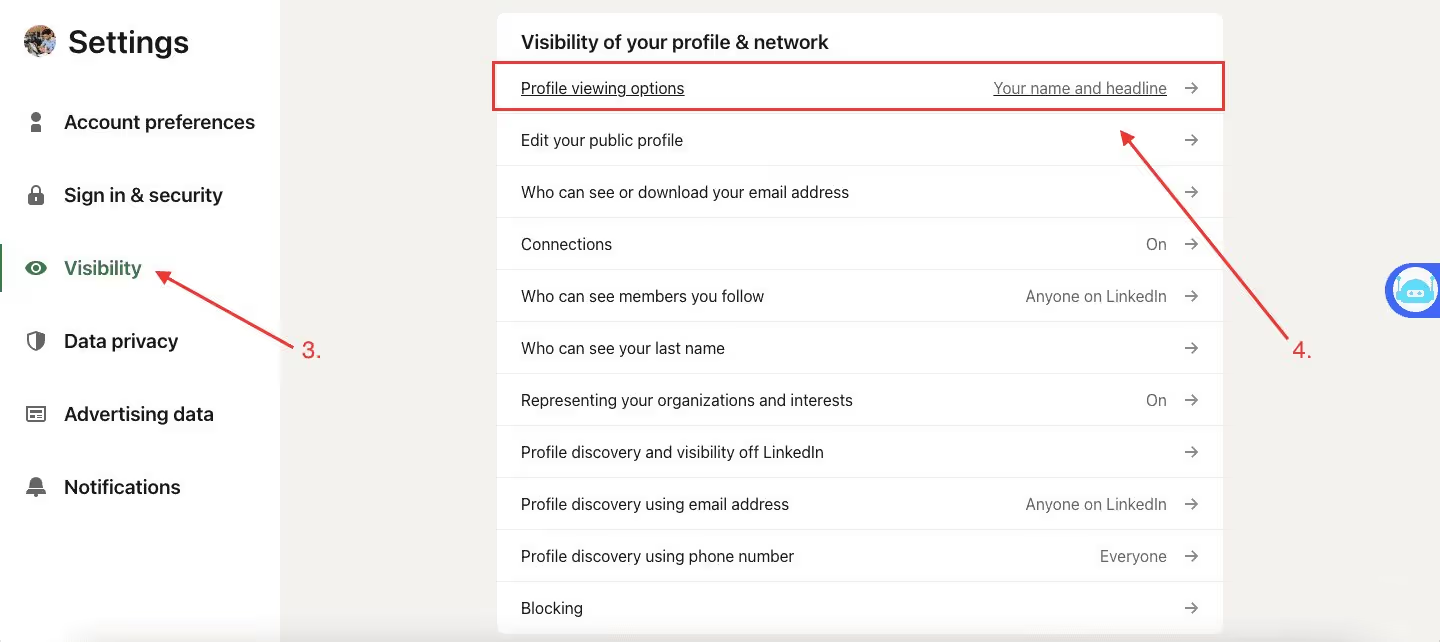
Step 4 - Private Mode: Check "Profile viewing options." If it's set to "Private mode," change it to "Your name and headline."

Bonus Tip: Review your other privacy settings, too – they can impact your connection requests.
Fix #3 - Bypass LinkedIn connection limits with SalesRobot
This fix is applicable for reason #2 - You've hit the weekly connection limit.
LinkedIn imposes certain daily connection limits to maintain platform integrity.
Normally, you could reach out to about 20 people daily, but SalesRobot helps bypass the LinkedIn connection limit using LinkedIn Events
However, recently LinkedIn started monitoring events more carefully.
If you join a LinkedIn event and start reaching out to people on the first day, you are likely to get banned.
Now, you need to wait a few months before you can reach out to people.
Automating your connection requests while adhering to LinkedIn's rules simplifies your experience and ensures you never encounter the "try again later" problem.
Fix #4 - Get rid of pending connection requests
This fix is applicable for reason #3- Your connection request is pending
LinkedIn's "unable to connect, try again later" issue often happens because your connection requests are piling up.
But don't worry; we can fix this by removing the pending connection requests. Follow these simple steps:
1: Head to your LinkedIn profile and click "My Network."
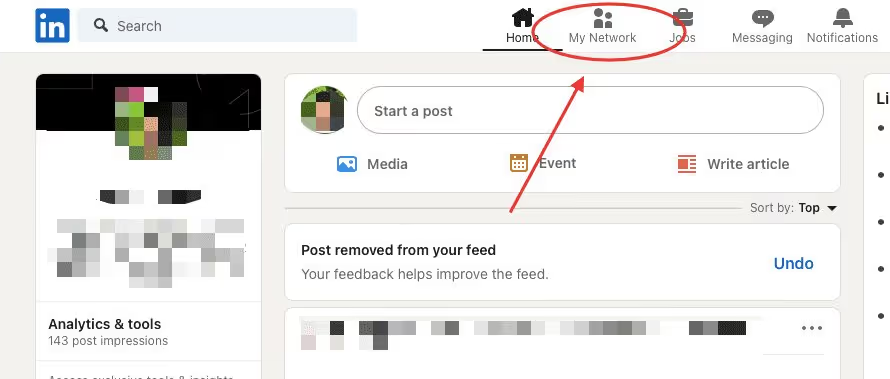
2: You'll see "Manage All" next to "Connection Requests." Click it!

3: Review your sent pending requests.

4: Remove the ones that have been sitting there for ages. Well, the process is quite tiresome if you regularly send connection requests to multiple accounts.
Btw if you use SalesRobot to send and manage your connection requests, it’ll keep an eye on your pending connection requests and withdraw old requests for you, so you don't have to do it manually.
Fix #5 - If LinkedIn banned you, just follow their rules
This fix is applicable for reasons #4 - The person you’re connecting with blocked you and #7 - You’re facing technical glitches
Like any social platform, LinkedIn has rules to maintain a respectful and professional atmosphere. These guidelines are there for a reason - to ensure a pleasant experience for all users.
So, what do I mean by "just follow their rules"?
It's quite straightforward, avoiding any behavior that might go against LinkedIn's policies.
This includes not sending too many connection requests in a short period or not engaging in spammy practices.
Think about it this way:
Would you want your LinkedIn feed cluttered with spammy content and random connections?
I guess not.
So, be considerate of others and play by the rules.
By doing so, you'll not only fix the issue but also improve your networking experience on LinkedIn.
Fix #6 - Temporarily pause connection attempts.
This fix is applicable for reason #7 - You’re facing technical glitches
When you encounter this problem, take a step back. Pause those connection attempts for a little while.
Sounds too simple, doesn't it? But trust me, it can work like a charm.
LinkedIn might think you're too eager, and it doesn't like that. So, give it a breather, wait a bit, and try again.
Taking a break can do wonders. Give it a shot and see if it solves your connection hiccups.
Fix #7 - Try to clear the cache and cookies.
This fix is applicable for reason #7 - You’re facing technical glitches
Your browser stores tiny bits of data to load websites faster. But sometimes, these bits get all jumbled up, causing issues.
So, here's what you can do:
1. Click Settings: First, go to your browser's settings.
It's usually represented by three dots or lines at the top-right corner.

2. Privacy & Security: Look for "Privacy" or "Security" in the settings menu or more tools.
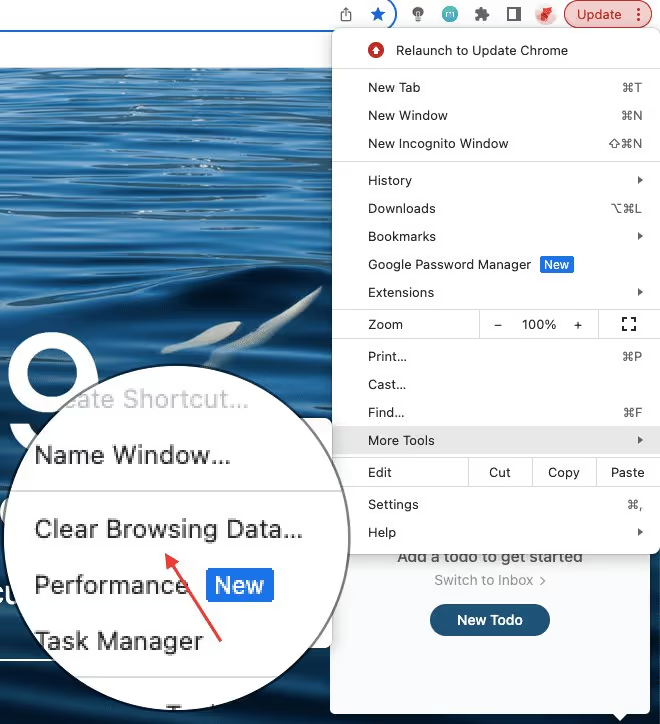
3. Clear Browsing Data: Find the option "Clear browsing data" or "Clear history."
4. Choose What to Clear: You'll see options like "Cookies and other site data" and "Cached images and files." Check these.
5. Clear Data: Hit the "Clear data" or "Clear" button. It might take a moment.
That's it! You've cleaned out the gunk.
Now, try LinkedIn again.
This trick works for many websites, not just LinkedIn.
Fix #8 - Sign out & sign back into your account.
This fix is applicable for reason #7 - You’re facing technical glitches
Sometimes, things get wonky on LinkedIn.
Logging out and logging back in can fix those hiccups.
Step 1: Click your profile picture (top right corner) and hit "Sign Out." Yep, we're logging out.
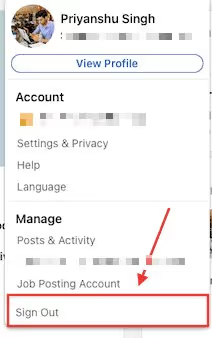
Step 2: Now, sign back in. Fill in your deets and hit "Sign In."
Why does this work?
Signing out and back in is like hitting the refresh button.
It clears any glitches that might be causing the 'unable to connect' error. Simple, right?
Fix #9 - Use a different browser.
This fix is applicable for reason #7 - You’re facing technical glitches
Different browsers have their own way of doing things. Some are like super athletes when running web apps smoothly, while others are sluggish.
Switching to a different browser gives LinkedIn a fresh start, and that's often all it needs to start working properly again.
If you've been using Chrome and it's not working well with LinkedIn, try using Firefox or Safari.
It might sound too simple, but it often works like a charm!
Fix #10 - If using a VPN, turn it off.
This fix is applicable for reason #7 - You’re facing technical glitches
Using a VPN might change your location or network settings in a way that LinkedIn doesn't quite understand.
Turn off your VPN.
Disconnect from your virtual private network, refresh your LinkedIn, and give it another go.
Sometimes, LinkedIn just wants to know where you really are.
Once you connect on LinkedIn, you can put it back on.
Fix #11 - Try using some other device
This fix is applicable for reason #7 - You’re facing technical glitches
Sometimes, it's not your account; your device is acting up.
Switching to a different device, like a phone or computer, can make all the difference.
Why does this work, you ask?
Well, devices can have different settings and configurations, and sometimes they clash with LinkedIn's systems.
So, if your laptop isn't playing nice, grab your phone, or vice versa.
Fix #12 - Update your password
This fix is applicable for reason #7 - You’re facing technical glitches
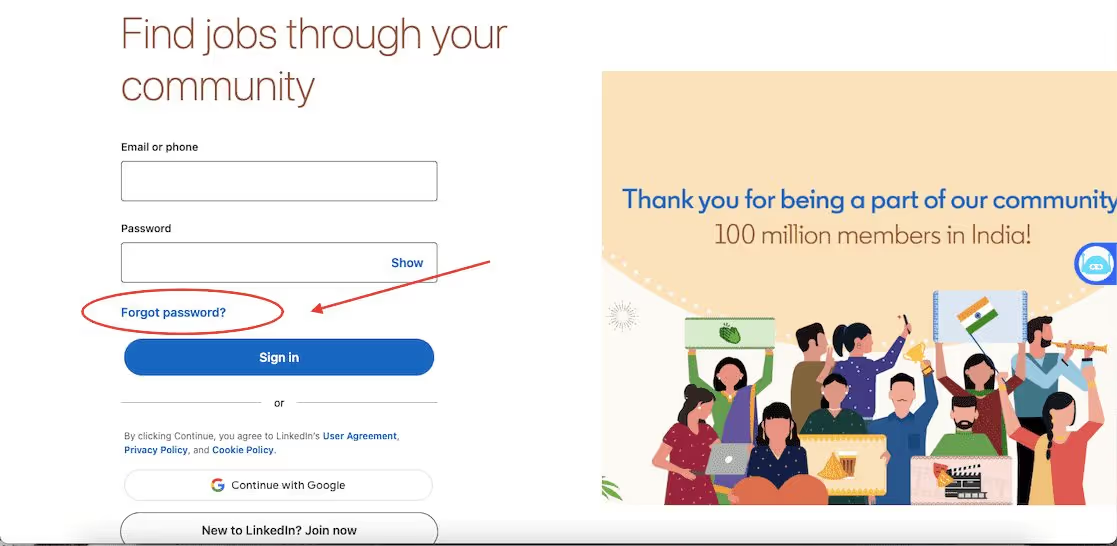
If your password has gotten too old, it can cause connectivity problems.
To refresh it, click the "Forgot Password" link on the login screen. LinkedIn will guide you through a password reset.
When creating a new password, make it strong!
Use a mix of uppercase, lowercase, numbers, and special characters. Don't go for "password123."
That's a big no-no.
Once you've updated it, try logging in again.
Your LinkedIn connection should be back on track.
Fix #13 - Flush active sessions
This fix is applicable for reason #7. - You’re facing technical glitches
Sure, here are the steps rewritten for clarity and simplicity:
To View Your Sessions:
1. Click the "Me" icon at the top of your LinkedIn homepage.

2. Select "Settings & Privacy" from the dropdown.

3. In the left sidebar under "Sign-in & security," click the arrow next to "Where you're signed in."
You'll see a list of your active sessions and options to sign out.
To Sign Out of an Individual Session:
1. Click "Sign out" to the right of the session you want to end.

2. Enter your password and click "End session."
To Sign Out of All Sessions (except your current one):
1. Click "Sign out of all these sessions" at the top of your list.
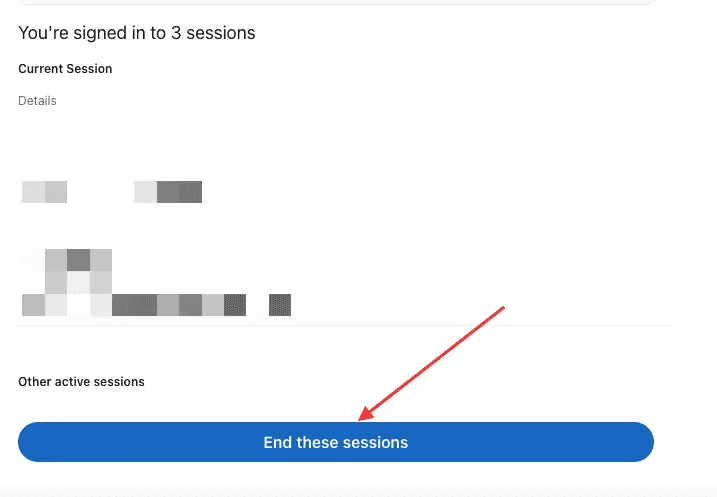
2. Enter your password and click "End session."
To View Connected Third-Party Applications:
1. Go to "Account preferences" and find the "Partners & services" section.
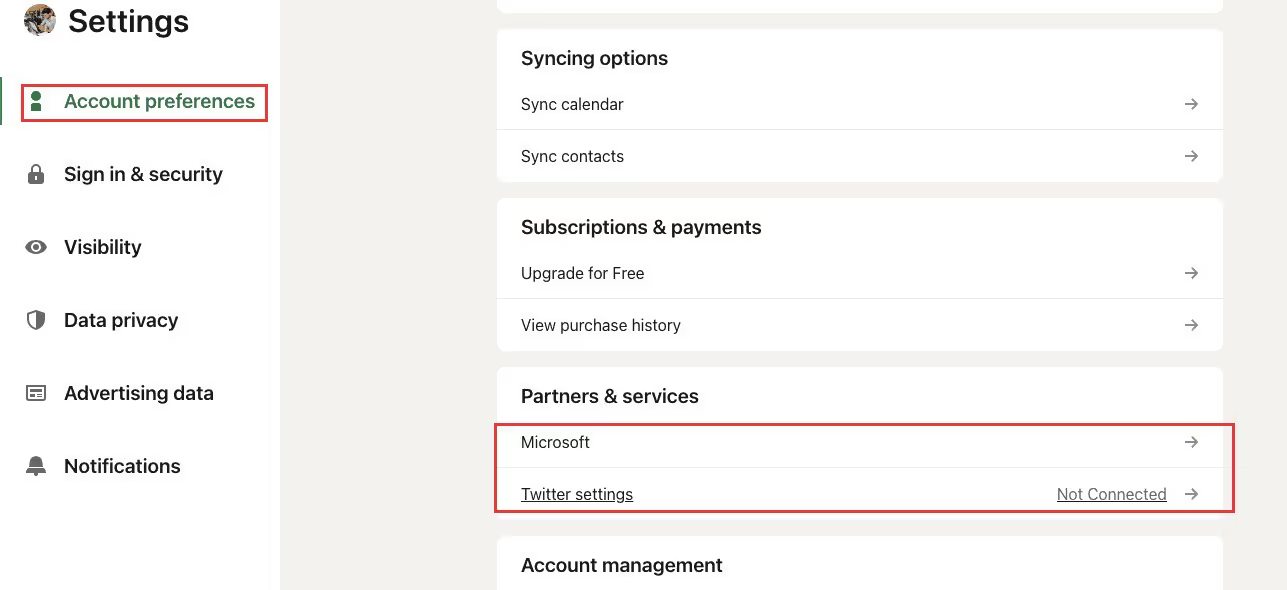
2. Click "Change" next to the listed third parties to view your connected accounts.
What should you do if you still can't connect?
If you've tried everything but still can't connect, it's time to give LinkedIn support a nudge.
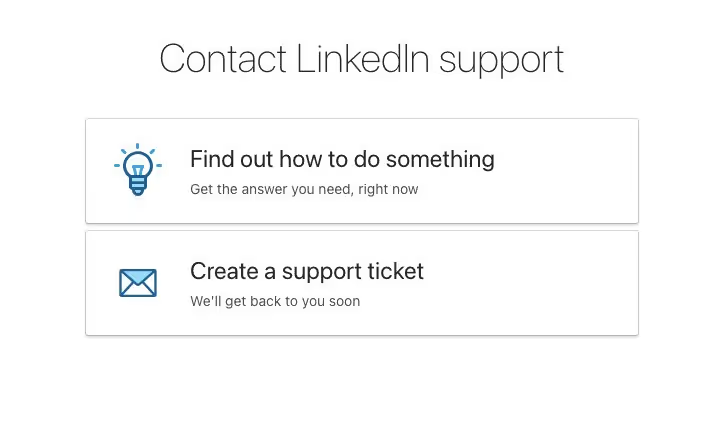
Here's how to do it:
1. Go to LinkedIn help center: First, visit LinkedIn's Help Center.
2. Search for your problem: Type your issue in the search bar. LinkedIn's Help Center is packed with solutions for common problems.
3. Browse solutions: Check out the suggested fixes. LinkedIn Support often has ready-made answers for common issues.
4. Contact LinkedIn support: If none of the solutions work, scroll down to find the "Contact Us" option. Click it.
5. Choose the right option: LinkedIn offers a few ways to reach them. Pick the one that suits you - email, chat, or request a callback.
6. Explain your issue: When you get in touch, explain your problem in clear, simple terms. Don't forget to be polite!
LinkedIn Support is usually pretty quick in helping out.
So, don't hesitate to ask them for a hand.
They're there to make your LinkedIn experience as smooth as possible.
Good luck!
So you know how most of LinkedIn outreach feels like a grind?
Switching between LinkedIn, email, spreadsheets, and random tools just to get one campaign running.
By the time you’re done setting it up, you’ve already lost half the energy to follow through.
That’s exactly where SalesRobot comes in, keeping everything in one place.
You might have noticed me mentioning it in the blog, and now you know why.
- Automates LinkedIn and cold email outreach so you never miss a touchpoint
- Enriches emails and phone numbers of prospects if available so you’re not wasting time on dead ends

- Manages all campaigns under a single dashboard
Instead of jumping between five different apps, you set things up once and let SalesRobot handle the rest.
And as a result, you can easily do outreach that feels personal, not spammy, and conversations that actually turn into leads.
And here’s what makes it different:
SalesRobot is built to be the safest LinkedIn automation tool out there.
You don’t have to worry about account bans or sketchy hacks.
While others are stuck worrying about limits, SalesRobot quietly books meetings in the background.
Our users consistently bring in hundreds of qualified leads every month.
And they do it without the headache of manual prospecting.
The best part?
You don’t have to take my word for it.
You can try SalesRobot completely free for 14 days.
No credit card. No phone number. Just your email and you’re ready to roll.
Heading 1
Heading 2
Heading 3
Heading 4
Heading 5
Heading 6
Lorem ipsum dolor sit amet, consectetur adipiscing elit, sed do eiusmod tempor incididunt ut labore et dolore magna aliqua. Ut enim ad minim veniam, quis nostrud exercitation ullamco laboris nisi ut aliquip ex ea commodo consequat. Duis aute irure dolor in reprehenderit in voluptate velit esse cillum dolore eu fugiat nulla pariatur.
Block quote
Ordered list
- Item 1
- Item 2
- Item 3
Unordered list
- Item A
- Item B
- Item C
Bold text
Emphasis
Superscript
Subscript


Wow your leads by cloning yourself and sending personalized videos and voice notes to each lead on LinkedIn.

If you don't reply to leads within 5 mins, your chances of converting them fall by 50%. Our AI replies on your behalf instantly! (and yes, you can train it)

Don't shoot in the dark. Get detailed analytics on what's working
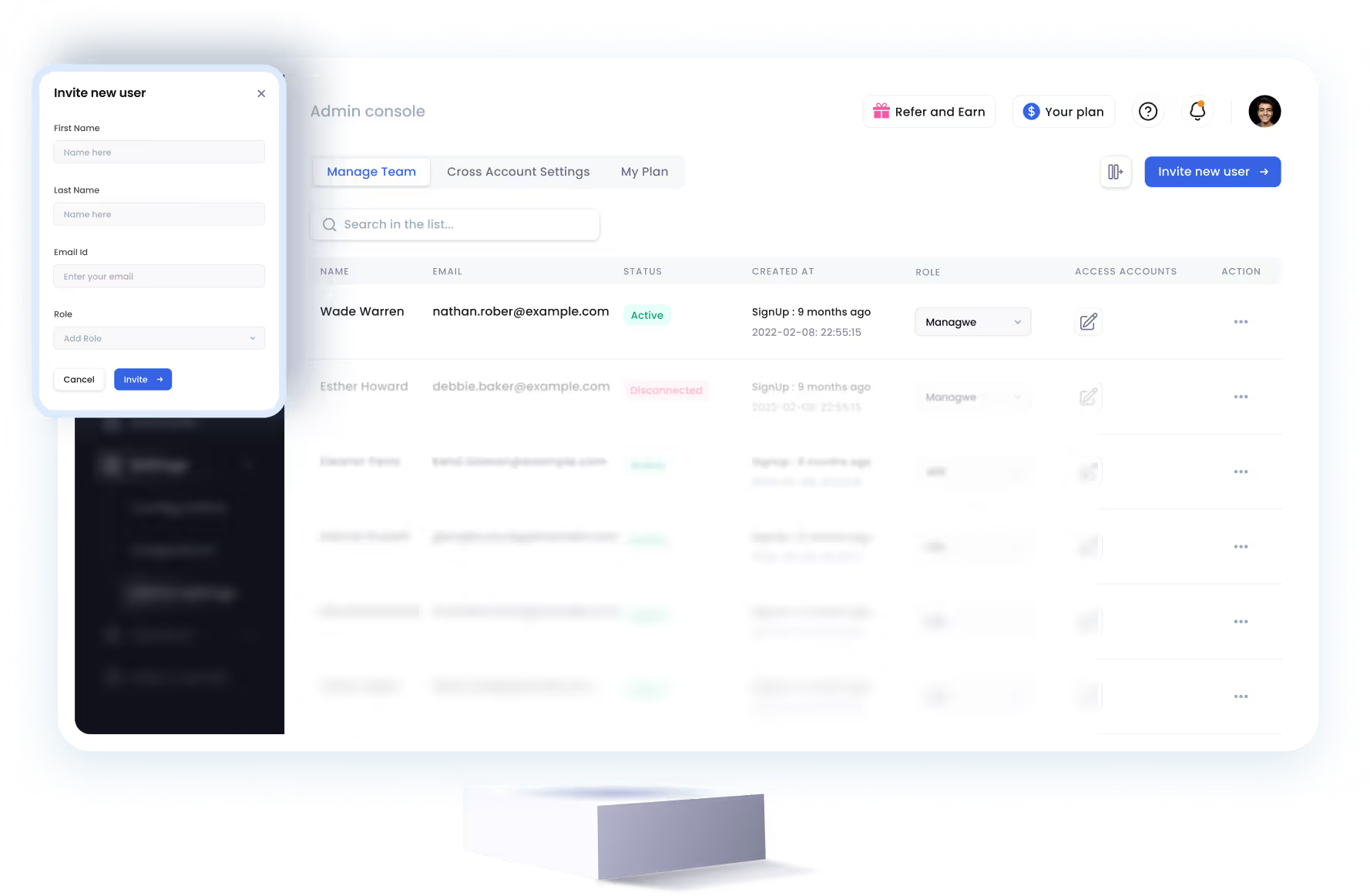
SalesRobot allows you to invite other team members, so that they can add their LinkedIn Account, run outreach campaigns and get amazing results just like you.
Trusted by 4100+ innovative B2B sales teams and lead gen agencies

.avif)

.avif)



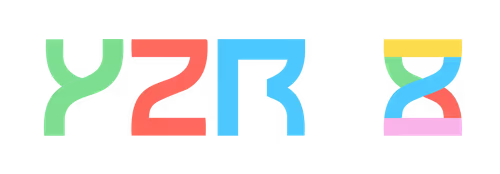
.avif)


